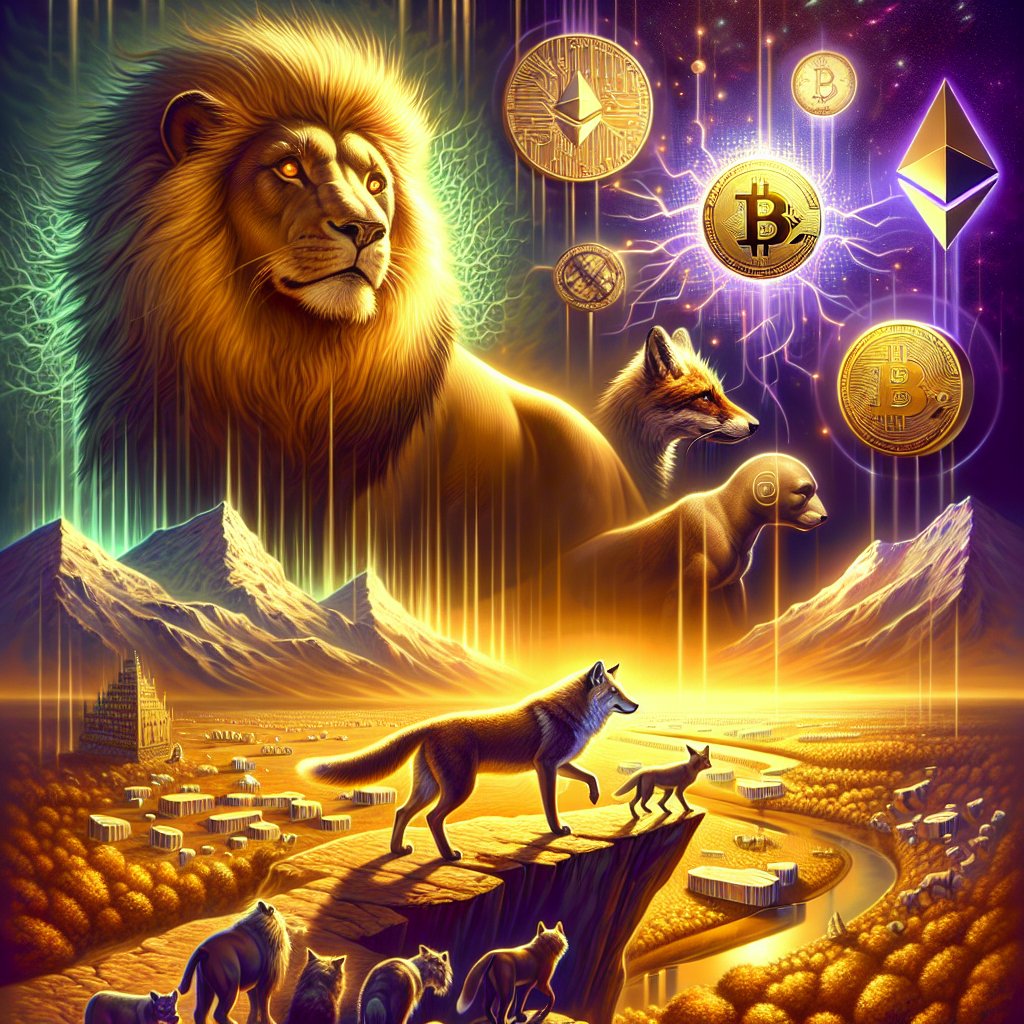Content created by AI
Bitcoin Gains Dominance While Ethereum and Other Cryptos Struggle to Keep Pace
Amidst a landscape rich with digital currency advancements, one cryptocurrency continues to capture the lion's share of the market and public fascination: Bitcoin. As Satori News Agency explores the profound disparity in performance among cryptocurrencies, the flagship digital asset has not only maintained but expanded its dominance, eclipsing rivals including the innovative Ethereum and emergent AI-related tokens.
The admiration for Bitcoin is currently soaring, buoyed by the burgeoning anticipation around the United States Securities and Exchange Commission (SEC)'s possible endorsement of a Bitcoin exchange-traded fund (ETF) post-Christmas. This speculative atmosphere has lofted Bitcoin to a comfortable status it hasn't relished in 18 months. Meanwhile, the rest of the crypto cohort isn't basking in the same elated aura, harboring mixed sentiments and erratic trajectories.
Ethereum, the runner-up to Bitcoin in terms of market capitalization, underpins a blockchain with grander aspirations than its forebear. Ethereum's blockchain isn't merely a ledger for recording transactions—its capability extends to holding digital assets and synthesizing smart contracts that automate complex agreements. This versatility serves as a bedrock for diverse sectors within the crypto sphere, including decentralized finance (DeFi), non-fungible tokens (NFTs), and blockchain gaming avenues.
These utility-driven facets were predicted to propel Ethereum to stratospheric heights, and yet, its performance belies that potential. In a year where it accrued an impressive 93 percent upturn, Ethereum failed to shadow the feats of Bitcoin, which surged by an astounding 162 percent. Other contenders like Solana and Cardano have also outpaced Ethereum with their stellar gains surpassing 550 percent and 154 percent respectively.
The market's turning of heads towards AI-integrated crypto tokens adds another layer to the evaluation of Ethereum's place in the ecosystem. The infusion of interest in AI within the crypto domain heralds a novel beacon of investment themes. These AI-associated tokens threw a spotlight on a synergy that may continue unabated into 2024, promising a riveting narrative for investors.
Yet, the journey for Ethereum has been complex, coursing through hype phases and facing down regulatory scrutiny that still lingers ominously, posing the question of whether these tokens should be classified as securities under current financial legislation.
Adding to the fray, Ethereum's milestones, such as the highly-anticipated "Merge" that slashed its carbon footprint significantly, have not catalyzed mainstream adoption as surmised. The celebratory mood post-Merge, which positioned Ethereum as a beacon for ESG (environmental, social, and governance) investors, simmered as the anticipated influx of this conscientious capital failed to manifest.
Reflective of the changing dynamics, during the Merge, Ethereum's market share stood at 18 percent with Bitcoin commanding 40 percent. In the aftermath, Ethereum's grip slimmed to 17 percent as Bitcoin burgeoned to encapsulate more than half the market at 52 percent.
This divergence establishes that while Bitcoin continues its ascendancy, catching the collective eye of investors and enthusiasts, Ethereum and its contemporaries have considerable terrain to navigate. As cryptocurrency entwines more intricately into discourse amongst families and networks, the convolution of its ecosystem evolves, but the resounding consensus is clear—Bitcoin reigns supreme, at least for now.






